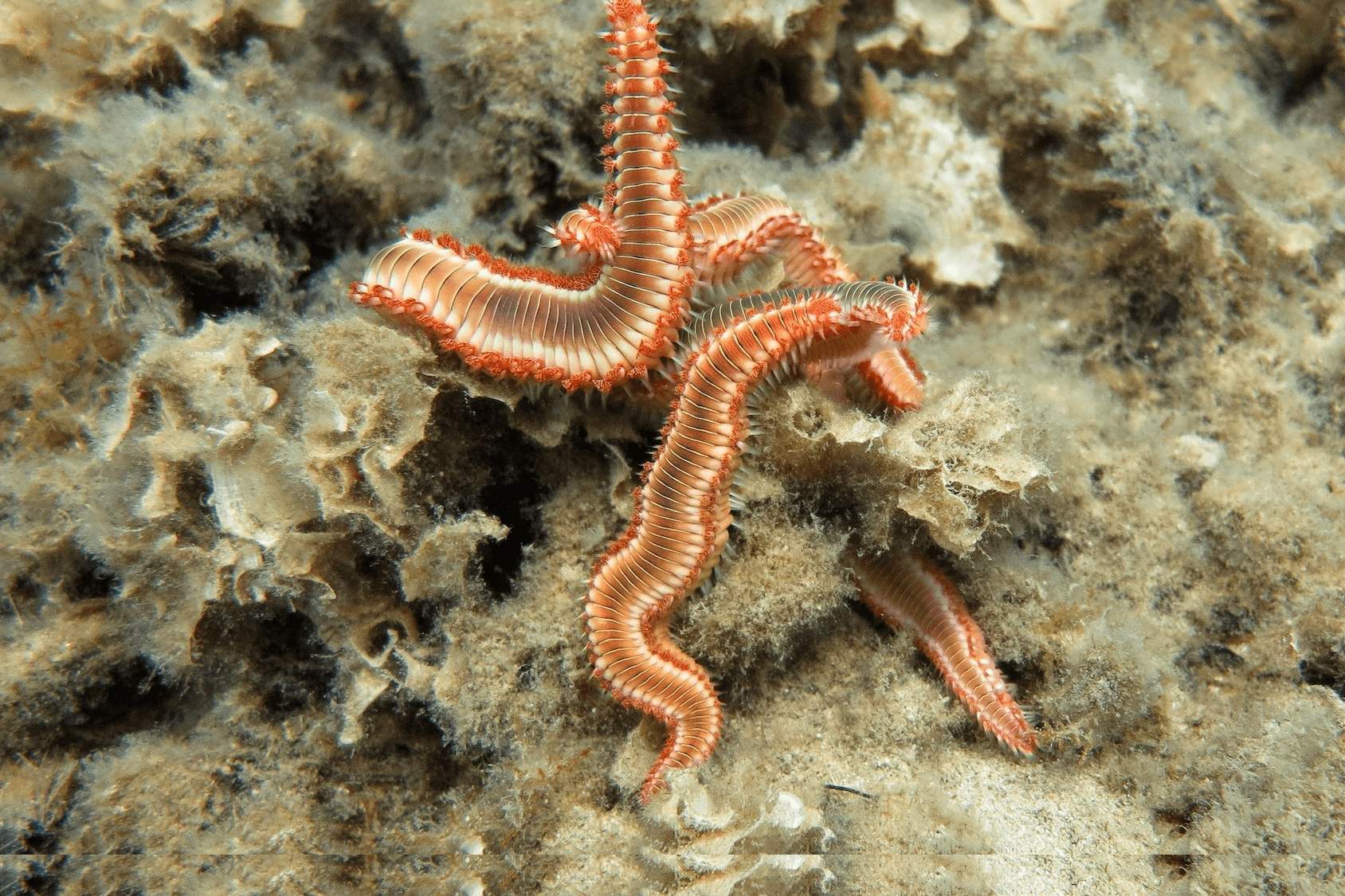
Bristle worms might look like something out of a sci-fi movie, but these fascinating creatures play a crucial role in marine ecosystems. Found in oceans worldwide, these segmented worms are known for their bristly appearance and diverse behaviors. Did you know that some bristle worms can glow in the dark? That's right, certain species exhibit bioluminescence, lighting up the ocean depths. While some bristle worms are harmless, others can deliver a painful sting if touched. Curious about their diet? These worms are scavengers, feeding on detritus and helping to keep the ocean floor clean. Whether you're a marine biology enthusiast or just curious, these 35 facts will give you a deeper appreciation for these incredible creatures.
Key Takeaways:
- Bristle worms are diverse marine creatures with unique physical traits and vital roles in the ecosystem, from breaking down organic matter to being indicators of environmental health.
- While bristle worms are essential for marine ecosystems, they can also pose challenges, such as becoming pests in aquariums and causing painful stings with their venomous bristles.
What Are Bristle Worms?
Bristle worms are fascinating creatures found in marine environments. These segmented worms have bristles along their bodies, which give them their name. Let's dive into some intriguing facts about these unique organisms.
- Bristle worms belong to the class Polychaeta, which means "many bristles."
- They can be found in oceans all over the world, from shallow waters to deep sea trenches.
- Some bristle worms are free-swimming, while others burrow into the sand or live in tubes they create.
- They have a wide range of sizes, from a few millimeters to over a meter long.
- Bristle worms play a crucial role in the marine ecosystem by breaking down organic matter.
Physical Characteristics of Bristle Worms
These worms have some unique physical traits that set them apart from other marine creatures. Their bodies are segmented, and each segment has bristles called chaetae.
- The bristles can be used for movement, defense, and sensing their environment.
- Some species have brightly colored bristles, which can be a warning to predators.
- Bristle worms have a head with specialized sensory organs, including eyes and antennae.
- Their bodies are often flattened, which helps them move through narrow spaces.
- Many bristle worms have parapodia, which are paddle-like appendages used for swimming or crawling.
Diet and Feeding Habits
Bristle worms have diverse feeding habits, depending on their species and habitat. Some are predators, while others are scavengers or filter feeders.
- Predatory bristle worms have strong jaws to capture and consume prey.
- Scavenger species feed on dead and decaying organic matter.
- Filter-feeding bristle worms use their bristles to trap plankton and other small particles from the water.
- Some species are detritivores, meaning they consume detritus, which is decomposing organic material.
- Bristle worms play a vital role in nutrient cycling within marine ecosystems.
Reproduction and Lifespan
Bristle worms have interesting reproductive strategies and life cycles. Most species reproduce sexually, but there are some exceptions.
- Many bristle worms are hermaphrodites, meaning they have both male and female reproductive organs.
- Some species release eggs and sperm into the water, where fertilization occurs externally.
- Other species have internal fertilization, where the eggs are fertilized inside the female's body.
- Bristle worm larvae are planktonic, meaning they float in the water column before settling down as adults.
- The lifespan of bristle worms varies widely, with some living only a few months and others surviving for several years.
Interaction with Humans
Bristle worms can have both positive and negative interactions with humans. While they are essential for marine ecosystems, they can also cause problems in certain situations.
- In aquariums, bristle worms can become pests if their populations grow too large.
- Some species have venomous bristles that can cause painful stings if handled.
- Bristle worms are sometimes used as bait by fishermen due to their abundance and ease of capture.
- They are also studied by scientists for their unique biology and ecological roles.
- Bristle worms can help maintain healthy aquarium environments by breaking down waste and uneaten food.
Unique and Unusual Facts
There are many surprising and lesser-known facts about bristle worms that highlight their diversity and adaptability.
- Some bristle worms can regenerate lost body parts, including their heads.
- The fireworm, a type of bristle worm, has venomous bristles that can cause severe irritation to human skin.
- Bristle worms have been found living in hydrothermal vents, where temperatures can exceed 300°C.
- Certain species of bristle worms exhibit bioluminescence, meaning they can produce light.
- The Christmas tree worm, a colorful and ornate bristle worm, is popular in the aquarium trade.
Environmental Impact and Conservation
Bristle worms play a significant role in their ecosystems, but they also face threats from human activities and environmental changes.
- Pollution and habitat destruction can negatively impact bristle worm populations.
- Climate change and ocean acidification pose additional threats to their survival.
- Conservation efforts aimed at protecting marine habitats can help preserve bristle worm diversity.
- Bristle worms are important indicators of environmental health, as their presence or absence can reflect changes in water quality.
- Protecting bristle worms and their habitats is crucial for maintaining the balance of marine ecosystems.
Fascinating World of Bristle Worms
Bristle worms, often misunderstood, play a crucial role in marine ecosystems. These segmented creatures, with their bristly appendages, help break down organic matter, keeping ocean floors clean. Despite their sometimes alarming appearance, most bristle worms are harmless to humans and beneficial to aquariums. They come in various sizes and colors, showcasing nature's diversity.
Understanding these worms can lead to better marine conservation efforts. Next time you spot one, appreciate its role in the underwater world. Bristle worms remind us of the intricate balance in nature, where even the smallest creatures have significant impacts.
So, whether you're a marine enthusiast or just curious, knowing about bristle worms enriches your knowledge of ocean life. Keep exploring, and you'll uncover more wonders beneath the waves.
Frequently Asked Questions
Was this page helpful?
Our commitment to delivering trustworthy and engaging content is at the heart of what we do. Each fact on our site is contributed by real users like you, bringing a wealth of diverse insights and information. To ensure the highest standards of accuracy and reliability, our dedicated editors meticulously review each submission. This process guarantees that the facts we share are not only fascinating but also credible. Trust in our commitment to quality and authenticity as you explore and learn with us.


